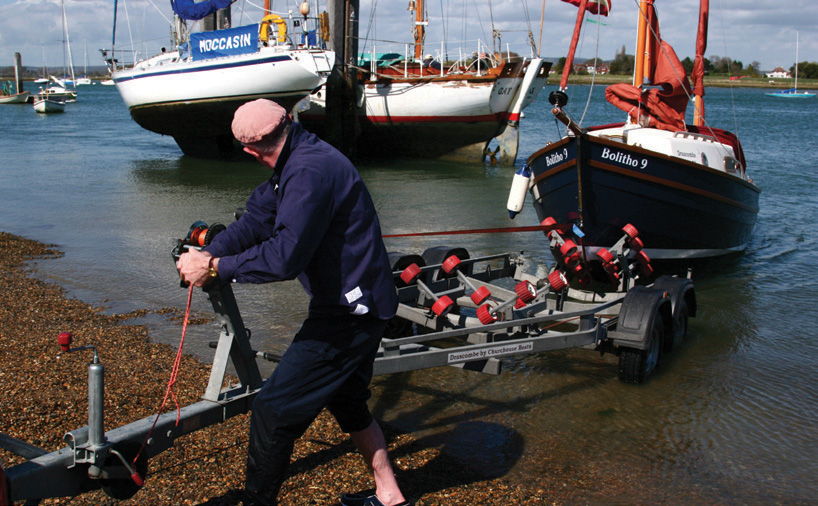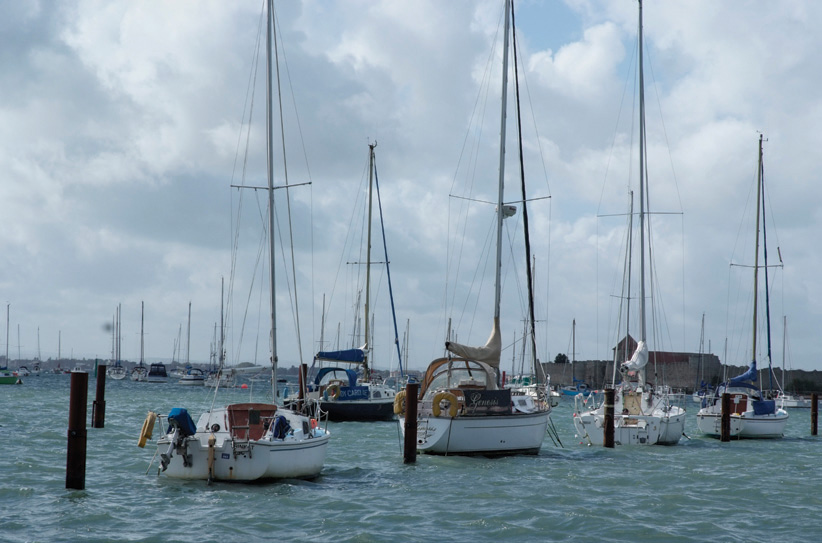 What are the options?
What are the options? What are the options?
What are the options?If you live near the water, this question is academic, but if you are based more than an hour away, then you are likely to have a choice of harbours in which to base the yacht. Spend a weekend or two scouting round by car to find a base that suits you.
 Trailer/sailer
Trailer/sailerIf you have space in the front garden, the cheapest option is to keep the boat on its trailer at home. It is also often the most convenient, because if you have a spare hour or two you can easily tackle small maintenance jobs, or make some progress on a larger project.
The less time you spend getting to the water and setting up the boat, the more you will use her. Some marinas operate dry storage in a secure area, and will even launch the boat prior to your arrival, but think about the maintenance. If the boat is stored a long way from home, it simply won’t get done, or only during good sailing time.
 Launching/recovery
Launching/recoveryThe big advantage of a trailer/sailer is that it gives you the opportunity to trail the boat to explore different cruising grounds and take her with you on family holidays both at home and abroad. But is she easy to launch and recover?
The first task is to locate a good slipway that you can launch and recover from at any state of the tide. The second is to have a good trailer preferably with a swinging cradle at the back end, which takes up the natural line of travel when the boat is launched and recovered. These are a quantum leap forward from early spine trailers and are designed so that the trailer wheel hubs and brakes need never be immersed in water. They not only simplify the whole process, but cut down on the maintenance and inevitable corrosion that leads to brake and hub failures.
The swing cradle reduces single-handed recovery to a simple routine. The trailer wheels need be immersed no deeper than the tyre rims, and with the boat’s centre point close to the pivot point of the cradle, this rocks backwards, its rollers acting as a guide for the boat to slide off.
During recovery, the same rollers receive the bow and centre the boat, and as you winch in, the cradle tilts and these rollers than take up the line of the bilge as the keel is brought in line with the rollers set along the forward spine of the trailer. There is no risk of the boat moving off line and grazing the finish on the rollers. The wheel bearings are kept dry and the trauma of recovery becomes a thing of the past.


 Pile mooring
Pile mooringPile moorings have been introduced in crowded anchorages to maximise the number of boats that can be accommodated in a small area. They are more secure than swinging from a buoy because the boats are attached fore and aft to the piles. They are invariably more expensive than a swinging mooring.
Some harbours operate a water taxi, which can simplify getting to and from the yacht, but does it operate during weekdays and out of season? There is nothing more boring for friends and family than standing around for an hour or so waiting idly for one person to put the yacht back on its mooring and row ashore - especially after a long day of sailing.

 Marina berth
Marina berthA marina berth can be 2-3 times the cost of a swinging mooring, but does allow 24 hour access, free parking, electricity and water, together with a greater degree of security. There are invariably a restaurant, toilets and showers nearby and it it much easier to entertain guests onboard. If time is limited, then the extra cost may well be worth considering.